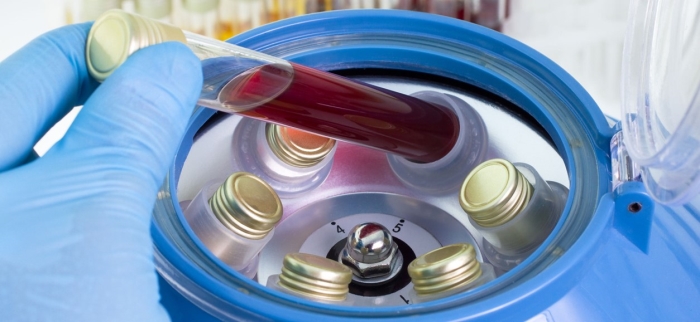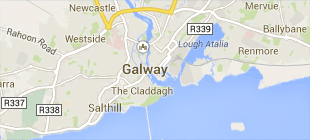Blood Cancer Biobank
What is a biobank
A biobank is a collection of biological specimens. Patients with blood cancers routinely have blood and bone marrow samples taken for diagnostic purposes. With the informed consent of the patient, excess samples can be “biobanked”. This means that the excess samples get stored so they can be used for research. The samples are stored at an ultralow temperature that can conserve them unmodified and undamaged. These samples can be used for biomedical and clinical research. This research helps us to better understand how blood cancer cells behave and how they respond to chemotherapeutic drugs. These studies are essential to develop better treatments against blood cancers.

How are samples stored in a biobank?
In the biobank the samples are anonymised and coded for confidentiality and to comply with data protection regulations. Biobank specimens are often categorized by disease or by using genetic and other traits, such as age, gender, blood type, and ethnicity.
The BCNI biobank is called Blood Cancer Biobank Ireland (BCBI). It is a national effort coordinating and standardizing blood cancer biobanking activities at sites in Galway, Dublin, Cork, Limerick and Waterford.
BCBI will be linked to Biobank Ireland Trust, the national biobank network of the country.
-
BCBI store high-quality, ethically-collected blood and bone marrow samples from blood cancer patients.
-
Selected samples are analysed by the latest genomic techniques providing the research community with invaluable data on what genetic mutations cause the cancer.
-
Researches can submit applications to access these samples for biomedical research. For further details and to receive an application form please email us at bcni@nuigalway.ie.
BCBI store:
-
Live leukemic cells,
-
Live bone marrow stromal cells,
-
RNA and DNA isolated from the leukemic and bone marrow stromal cells.
Over time, the genetic make-up of the stored samples will be analysed and made available to researchers. The genetic database will become an invaluable asset and information resource to drive the development of better treatment strategies for patients with blood cancers.
Please see ourBiobank information leaflet explaining what a Biobank is and what you can do to participate in our Biobank
Research findings supported by donated biobank samples
3D Bone Marrow Model for Leukemic Stem Cell Dormancy
The University Galway researcher team of BCNI led by Eva Szegezdi have developed a new three-dimensional culture system that closely mimics the bone marrow microenvironment, enabling the study of how leukemia stem cells remain in a quiescent/dormant state and thus resist chemotherapy. By combining acute myeloid leukemia (AML) cells with stromal cells, growth factors and low-oxygen conditions typical of the bone marrow, the model successfully reproduced key features of quiescence, including reduced proliferation and metabolic activity. Notably, the system can be adapted into microscopic organ-like microbeads for high-throughput drug screening, offering a powerful tool to identify treatment combinations that may overcome leukemia cell dormancy and improve therapeutic strategies.
The full publication can be found here: https://pubmed.ncbi.nlm.nih.gov/34589478/
BCNI and National Cancer Registry Ireland (NCRI) collaboration: challenges and utility of an Enhanced Blood Cancer Outcomes Registry (EBCOR) pilot
The university College Cork team of BCNI, in collaboration with the National Cancer Registry Ireland (NCRI), piloted the Enhanced Blood Cancer Outcomes Registry (EBCOR) to collect more comprehensive data on blood cancer patients. In acute myeloid leukaemia, the project showed that age at diagnosis was a stronger predictor of survival than pre-existing medical conditions. The EBCOR pilot demonstrated that high-quality patient data from our biobank can address key questions on cancer outcomes and guide improvements in future patient care.
The full publication can be found here: https://pubmed.ncbi.nlm.nih.gov/39030463/
Simultaneously modifying immune cells with two gene-editing techniques to better fight leukemia
The laboratory of Michael O’Dwyer, at the University of Galway have established a novel strategy to engineer natural killer (NK) cells by integrating a chimeric antigen receptor (CAR) with targeted gene editing, utilizing advanced transposon and CRISPR/Cas9 technologies. The resulting dual-engineered NK cells, directed against the CLL-1 antigen, exhibited enhanced cytotoxic activity against leukemia cells in vitro. This study demonstrates how leveraging biobank-derived samples in combination with state-of-the-art gene-editing approaches can advance the development of next-generation NK cell therapies for blood cancers.
The full publication can be found here: https://pubmed.ncbi.nlm.nih.gov/36050244/
Targeting hypersialylation in multiple myeloma represents a novel approach to enhance NK cell-mediated tumor responses
This study by the University of Galway BCNI team led by Michael O’Dwyer leveraged biobank resources to demonstrate that removing specific carbohydrate (sgar-like) molecules (sialic acids) from the surface of multiple myeloma cells enhances their susceptibility to cancer fighting natural killer (NK) immune cells. Desialylation of malignant cells not only improved NK cell function but also potentiated the efficacy of existing multiple myeloma therapeutics. These findings highlight a promising immunomodulatory strategy for improving therapeutic responses in blood cancers through the integration of biobank-derived samples and data.
The full publication can be found here: https://pubmed.ncbi.nlm.nih.gov/35294519/
Cell-cell communication in the hematopoietic niche and its changes in acute myeloid leukemia
The bone marrow is a highly complex environment that produces billions of blood cells each day, yet it remains poorly understood. Using single-cell gene expression analysis of more than 339,000 bone marrow cells, the laboratory of Eva Szegezdi (University of Galway) created a detailed map of this environment in both healthy individuals and patients with acute myeloid leukemia (AML). The study revealed widespread changes in cell types and signaling in AML, including increased interactions that promote immune suppression, cell adhesion, and cytokine signaling. Notably, signals involving transforming growth factor β1 (TGFB1) were found to drive leukemia cell dormancy in laboratory models. These insights provide a deeper understanding of how AML reshapes the bone marrow niche and may inform the development of new therapeutic strategies.
The full publication can be found here: https://pubmed.ncbi.nlm.nih.gov/37332612/

